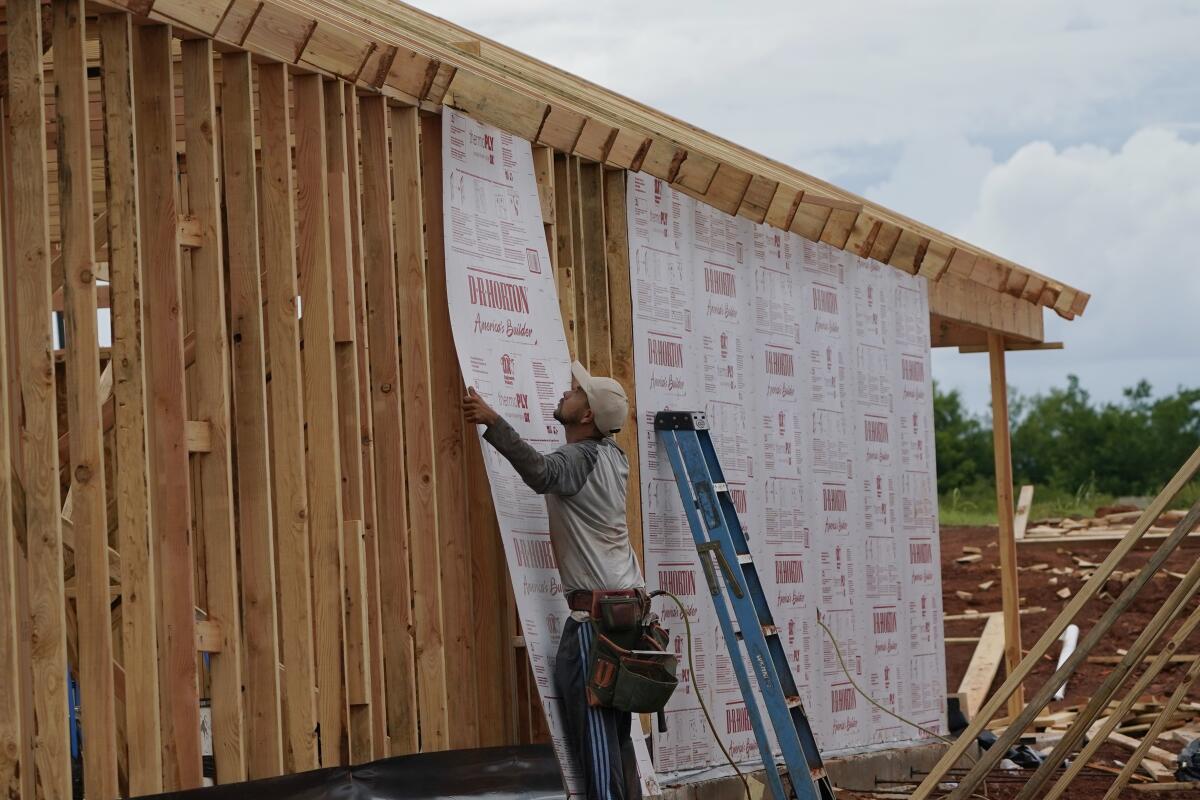Op-Ed: Climate change is a big problem. Citizens must demand many small solutions

The world is on fire. The flames are hard to see, because we hide them so well. But you can hear them — in the whine of jet engines as planes streak across the sky, in the rumble of power plants as they send electricity surging over power lines, in the purr of your car engine as you drive to work.
Every person living in a well-off country contributes to the conflagration. When you and your neighbors turn on your lights at night, a coal- or gas-burning power plant somewhere will most likely increase its fuel use — just a smidgen — to supply the electricity.
We are starting to feel the consequences of these actions in climate change: heat waves worse than any in recorded history, rising seas, a runaway increase in wildfires.
Many people are trying to help, in their own ways — perhaps by buying a Prius or an electric car, recycling diligently, installing smart thermostats, eating less meat, maybe contributing money to an environmental group. These actions are important, but by themselves they are not enough. The world will not be saved by conscientious “green consumers” who decide, one family at a time, to drive less or install solar panels on the roof. The problem is just too big for that.
Instead, we all need to become “green citizens.” We need to focus, together, on a relatively small number of public policies that can, over time, bring about sweeping change.
The Inflation Reduction Act of 2022 passed by Congress will help by using tax subsidies to make clean energy more affordable, which should speed the construction of wind and solar farms, hasten the switch to electric cars and much more. But Congress did not clear away many of the obstacles that are slowing change. And a lot of those issues are under the control of state and local governments.
This means much of the work to reduce greenhouse gas emissions will need to be done by local leaders, spurred on by their citizens. A prime example is the need to improve our building codes.
Buildings are one of the nation’s largest sources of carbon dioxide emissions. It will be impossible to meaningfully slow global climate change without cleaning up America’s buildings, and the way to do it is to subject them to new rules.
The tasks ahead of us are, in principle, straightforward: tighten the shells of our buildings, old and new, and electrify everything that uses energy in those buildings, so that emissions fall as the electric grid gets cleaner.
In many regions of the country, natural gas is the customary fuel for space heating and the hot water that flows from faucets. In some regions, homes are still heated with fuel oil or propane gas stored in tanks. When you count these fossil fuels along with electricity use, buildings are the source of one-third of our national carbon emissions.
More than 50 cities in California and a handful of other states have adopted or proposed rules to ban or limit new gas hookups. The gas industry is fighting back, running advertisements with gauzy pictures of blue flames to make gas look nostalgic and inviting, instead of like the huge climate problem that it is. To resist expanding fossil fuel use, citizens must use their influence to counter this malign industry campaign.
Tightening the shells of structures is also crucial because even in places where energy efficiency has been a mantra for decades, enormous amounts of energy are still being wasted in poorly constructed buildings. It’s not that hard to do better.
Our buildings need better insulation and proper sealing of air gaps, which solves much of the energy problem before the building is occupied. They need better windows, situated properly. With different coatings, windows can absorb solar energy, which you would want in chilly Minneapolis, or reflect it, for a place like Los Angeles. Roof overhangs and window orientation make a world of difference as well, creating free heating and cooling for the life of the building.
California already has statewide building standards that are among the toughest in the country, but they need to get tougher. And cities are allowed to go beyond the state code, imposing stronger requirements for energy efficiency. This is what citizens everywhere need to demand.
How can motivated green citizens make sure these basic design principles are followed in their communities?
Across much of the world, building codes are updated on a three-year cycle, with new, tighter energy requirements each time. But too many American states and cities are slow to adopt changes. Your local city council needs a nudge from constituents. That means citizens need to dig in and learn a little bit of detail about when the votes are coming up, and then speak up.
When your town decides how strict the local building code will be — and how much energy new buildings will be allowed to waste — you can bet many local builders will ply their influence to try to get the weakest code they can. You, as a citizen, can ply your influence, too.
The incremental costs of making a new building energy-efficient are trivial, typically adding just a few percent increase to the total cost. And that upfront investment will be paid back many times in energy savings over the life of the building.
Building codes are just one example. How fast we can switch to electric cars depends in large part on how fast we build car chargers, and state and county governments can have a huge influence on that. Millions of American families put their children on dirty, smoke-belching diesel school buses every morning, even though clean electric buses are becoming available. Why aren’t we marching down to the local school board to demand them? When new wind and solar farms are proposed, naysayers turn out to fight them. Where are the voices of citizens who understand that we need to build clean energy as fast as possible?
Too many Americans feel paralyzed by the climate crisis. It is a daunting problem, but the idea that we as citizens can do little about it reflects a poverty of imagination. If you’re tired of feeling helpless with a sense of impending doom, put on your marching shoes and make some political demands.
Hal Harvey and Justin Gillis are the authors of “The Big Fix: 7 Practical Steps to Save Our Planet,” to be published Tuesday. This article is an adapted excerpt.
More to Read
A cure for the common opinion
Get thought-provoking perspectives with our weekly newsletter.
You may occasionally receive promotional content from the Los Angeles Times.










